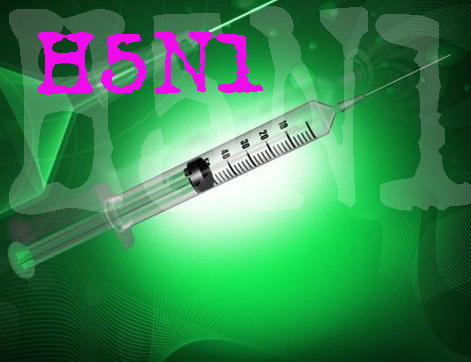
By Frank Whalen –
As scientists develop ways to modify viruses such as the H5N1, more commonly known as the bird flu virus, contention about reporting the detailed results is rearing itself in the biological research community. However, the research itself is questionable.

For example, recently at a conference on the flu virus, Dr. Ron Fouchie announced he had created in his lab a formof bird flu virus that had become “highly contagious” between ferrets, the preferred animal for testing. “It seemed that just five mutations did the trick,” he said.
Now, as a Nov. 17 article by Nell Greenfieldboyce entitled “Bird Flu Research Rattles Bio-Terrorism Field” states, some in the scientific community are arguing that making findings public “could potentially reveal how to make powerful new bio-weapons.”
Oddly though, no one seems concerned that the research itself is taking place or asking why such discoveries are being pursued.
Lynn Enquist, editor in chief of the Journal of Virology, explained it this way to AFP: “Scientists in the United States and all around the world are very curious as to how this thing is going to evolve because we have to be prepared for it.”
Ironically, in preparing for such an eventuality, scientists seem to be creating deadlier viruses rather than these contagions evolving naturally.
In March 1997, The New York Times ran a story about how researchers were attempting to find live samples of the “Spanish flu virus that killed at least 20 million people worldwide in the influenza pandemic of 1918.” Researchers at the Defense Department were hopeful “that understanding the genetic code of the Spanish flu virus might help scientists prepare for the next influenza pandemic, which many scientists think is coming soon.”


In her book Swine Flu Exposé, author Dr. Eleanora McBean wrote that the 1918 Spanish flu was actually caused by vaccinations. Dr. McBean explained how soldiers at the time were given multiple vaccines, some of which may have contained live germs.
“When several shots are given (different vaccines) within a few days or a few weeks apart, they often trigger intensified cases of all the diseases at once because the body cannot handle such a large amount of deadly poison being injected directly into the bloodstream,” she wrote. “The doctors call it a new disease and proceed to suppress the symptoms.”
In researching the beginnings of the outbreak, she contacted the government for verification. “They sent me the report of U.S. Secretary of War Henry L. Stimson,” she wrote. “The report not only verified the report of the seven who dropped dead from the vaccines, but it stated that there had been 63 deaths and 28,585 cases of hepatitis as a direct result of the yellow fever vaccine during only six months of the war. That was only one of the 14 to 25 shots given the soldiers. We can imagine the damage all these shots did to the men.”
Interestingly, the Times confirmed, “The Spanish flu epidemic seems to have begun in the United States in late spring and early summer of 1918 when doctors reported scattered outbreaks inmilitary installations where recruits were reporting for training.”
National Public Radio (NPR) quoted John Steinbruner, the director of the Center for International and Security Studies at the University of Maryland, who warned: “We really do need to develop a better oversight process and a better way of organizing global judgments about very, very dangerous lines of research. And we haven’t yet done it.”

